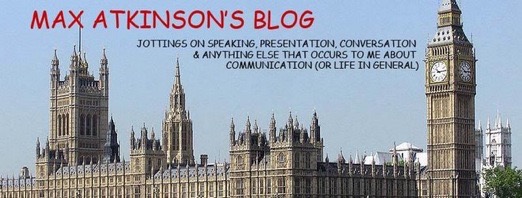
I’ve just received an email with Christmas greetings from the White House Writers Group in Washington D.C., which contains a nice little ditty:
Santa called the other day.
"I need a speech and right away!
It should sound new, but somehow old;
A message sweet, yet still quite bold.
My words must be both short and clear
And memorable throughout the year!"
Our writers worked all through the night
To get each phrase exactly right.
Then one scribe cried, "Ah ha! I know!
Tell Santa to say just, 'Ho, ho, ho!'"
Rhetorically speaking, their use of repetition, alliteration and a three-part list can hardly be faulted.
But, having just seen Santa using these very words 3,000 miles away from Washington, I realise that this memorable line raises another intriguing question, namely, what had he been talking about just before saying “ho, ho, ho”?
The reason for asking the question comes from many years ago when I heard the late Gail Jefferson talking about her fascinating and innovative work on transcribing particles of laughter, of which “ho, ho, ho” is one of several possible vowel sounds – such as “ha, ha , ha”, “he, he, he”, “huh, huh, huh”, etc.
The gist of Jefferson’s point was that which one of these gets selected often seems to be triggered by vowel sounds that had come immediately before it. Someone might say “he was stung by a bee – he-he-he!”, “he was locked in the bar – ha-ha-ha” or “she dropped a bottle of gin on her toe – ho-ho-ho”.
I didn’t catch what Santa had been saying just before he used the line that had been supplied to him by the White House Writers Group, so there’s scope here for a pre-Christmas creative competition.
Suggestions as to what it was he'd said just before "ho-ho-ho" before midnight on 25th December, please.

